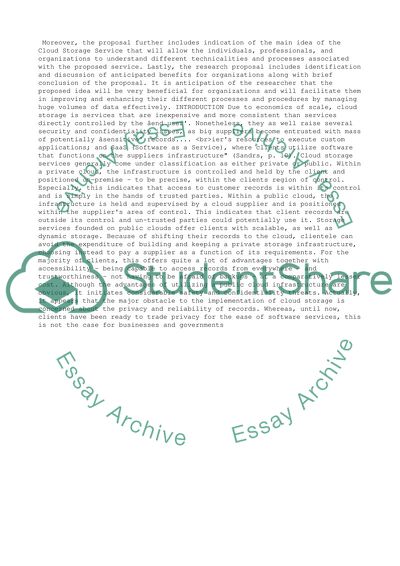Cite this document
(“PROPOSAL ON CLOUD STORAGE SERVICE Research Example | Topics and Well Written Essays - 3250 words”, n.d.)
Retrieved from https://studentshare.org/business/1425342-write-a-proposal-about-cloud-storage-service-which
Retrieved from https://studentshare.org/business/1425342-write-a-proposal-about-cloud-storage-service-which
(PROPOSAL ON CLOUD STORAGE SERVICE Research Example | Topics and Well Written Essays - 3250 Words)
https://studentshare.org/business/1425342-write-a-proposal-about-cloud-storage-service-which.
https://studentshare.org/business/1425342-write-a-proposal-about-cloud-storage-service-which.
“PROPOSAL ON CLOUD STORAGE SERVICE Research Example | Topics and Well Written Essays - 3250 Words”, n.d. https://studentshare.org/business/1425342-write-a-proposal-about-cloud-storage-service-which.


